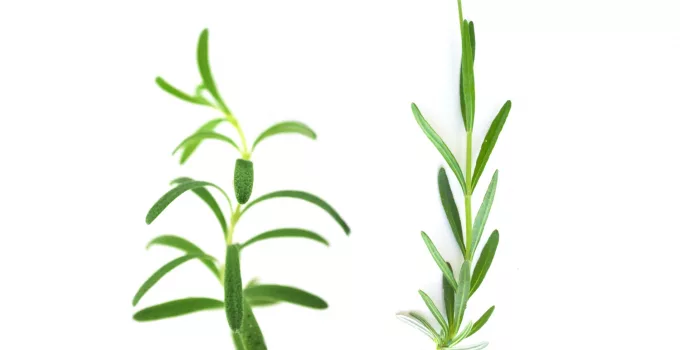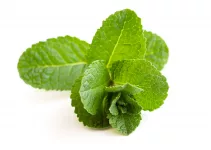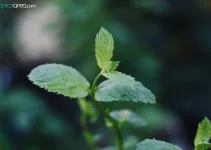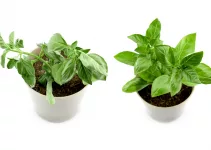When comparing rosemary vs lavender, there are a couple of automatic things that come to anyone’s mind:
- rosemary is the herb used for cooking in kitchens around the globe
- lavender is that purple plant that looks really beautiful and smells even better
I’m not even sure that absolutely everyone is aware that lavender is also an herb that can be used for cooking, although in a more limited manner than other herbs. Given these two big differences, let’s see if there is more to be discovered in our rosemary vs lavender article.
If you’re interested in reading even more comparisons, check out my articles on thyme vs rosemary, mint vs peppermint, and peppermint vs spearmint.
Table of Contents
Rosemary vs Lavender: Main Differences
The main difference is their use in the kitchen. In this vast area, one tops the other, without a doubt. A famous recipe where both contribute is the Vinegar of the four Thieves.
1. Rosemary: more popular for cooking
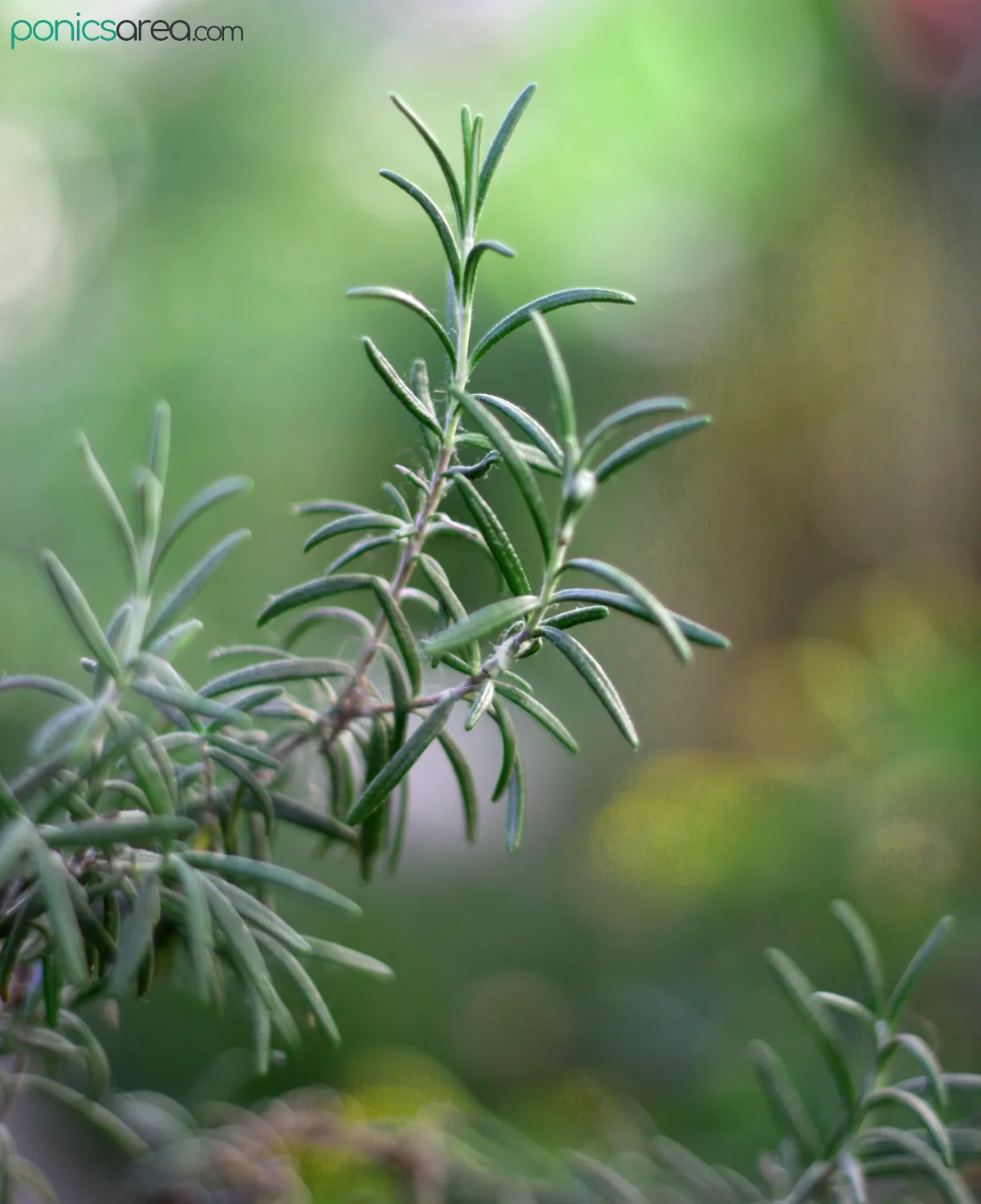
Rosemary plant
In my rosemary vs lavender debate, this is actually what I consider to be the main difference between the two.
Rosemary is just absolutely delicious for making savory dishes:
- complements flavors like wine and garlic
- goes well with starchy foods (breads, the famous foccacia with dried/fresh rosemary, potatoes)
- and obviously with meats (pork, duck, game, lamb)
- used for making sausages, stuffings, stews
- to flavor olive oil or vinegar
- just as good dried as it is fresh, just with a much harder woody texture
It’s so absolutely good that, if I had to decide, it would be impossible for me to choose between parsley, basil, thyme, oregano, and cilantro. I can give up mint, dill, sage, tarragon and even horseradish but not the others.
If you want to try something quite different, you should consider making rosemary gelato. There are quite a few recipes and unique combinations.
2. Lavender: limited uses in the kitchen
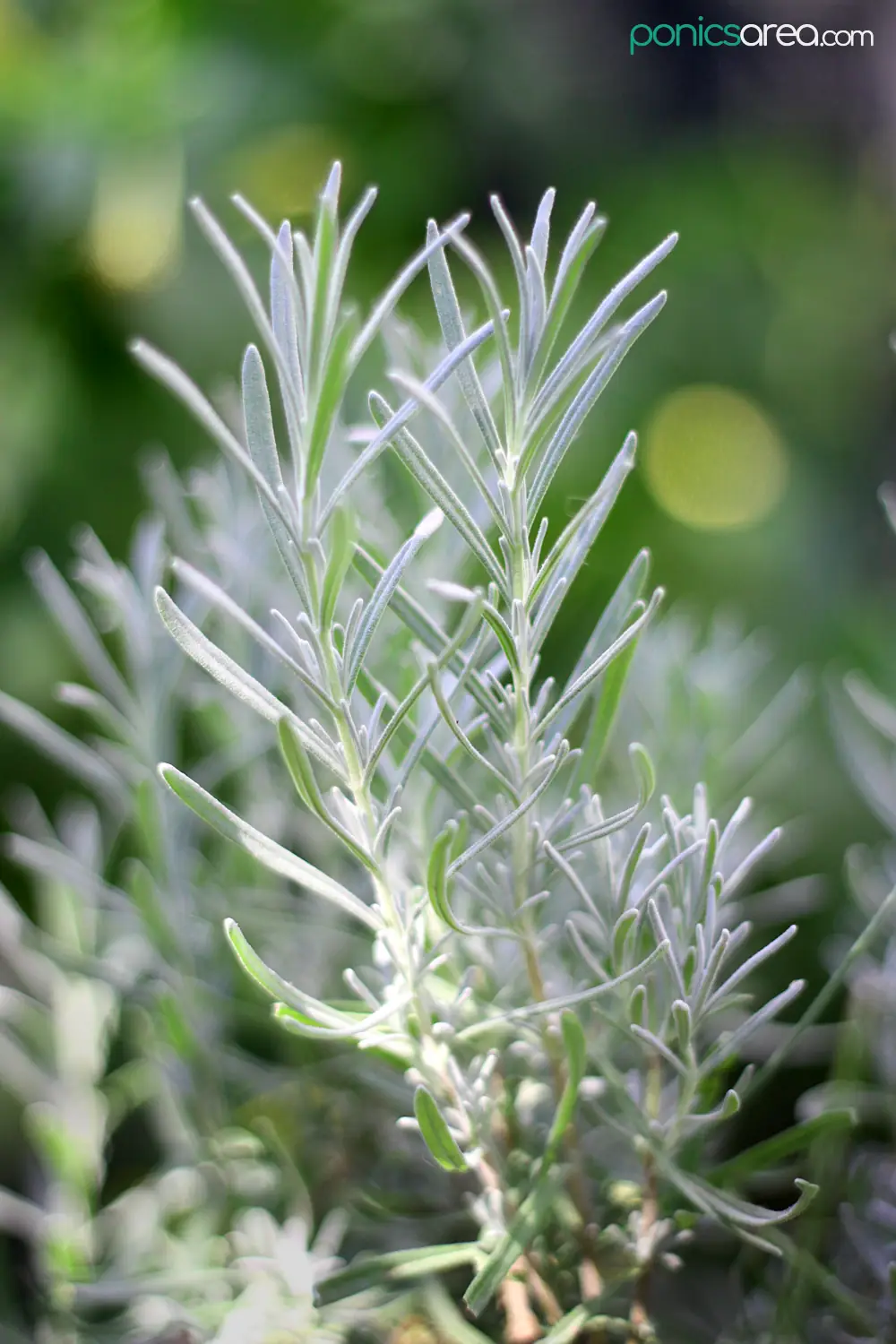
Lavender plant
When it comes to the cooking industry, its fame is given by belonging to a famous mixture: herbes de Provence. It can also be used for making sweet dishes.
Lavender is used for cooking in the form of fresh and dried flowers but not by so many people.
3. Potted rosemary is amazing
Rosemary is a wonderful herb to grow in a pot, just like basil, mint, parsley, cilantro, thyme, oregano.
It’s helpful to grow potted rosemary all year round if you love using it in your recipes. It will also look beautifully in your house in a pot or several.
Obviously, rosemary can be grown in the garden successfully, as well. You can plant it near beans, cabbage, carrots. And near herbs like sage, thyme, bay, basil, chives, fennel, lavender, marjoram, savory, tarragon, parsley.
It grows about 4-6 feet in height and spreads out 6-8 feet.
4. Lavender grows smaller
On the other hand, lavender is better grown in the garden in the ground or in raised garden beds.
It grows in beautiful shrubs, only reaching 2 feet in height and width or up to 3 feet in height. Lavender is actually the smaller of the two, although you might not have expected it to be so.
It can also be grown in pots but, for me, it simply doesn’t hold the same charm. However, those living in apartments can definitely plant their lavender in pots to enjoy its blooming beauty.
Rosemary vs Lavender: Common Features
On my list of common features, you’ll find some surprising and very interesting facts.
1. Belonging to the same family
All the herbs that we love so much belong to one big family: Lamiaceae family.
Lamiaceae is also called the mint family of flowering plants with 236 genera and more than 7000 species.
There are about 30 species of lavender. The wild lavender in France is one of the most famous of them all and captured in countless pictures. It’s also prized for its essential oil, which is used therapeutically and in the perfumery industry.
On the other hand, all rosemary varieties belong to one species – R. officinalis (Rosmarinus officinalis). Its name translates to dew of the sea and it is also known as the Tuscan herb.
2. Similar appearance
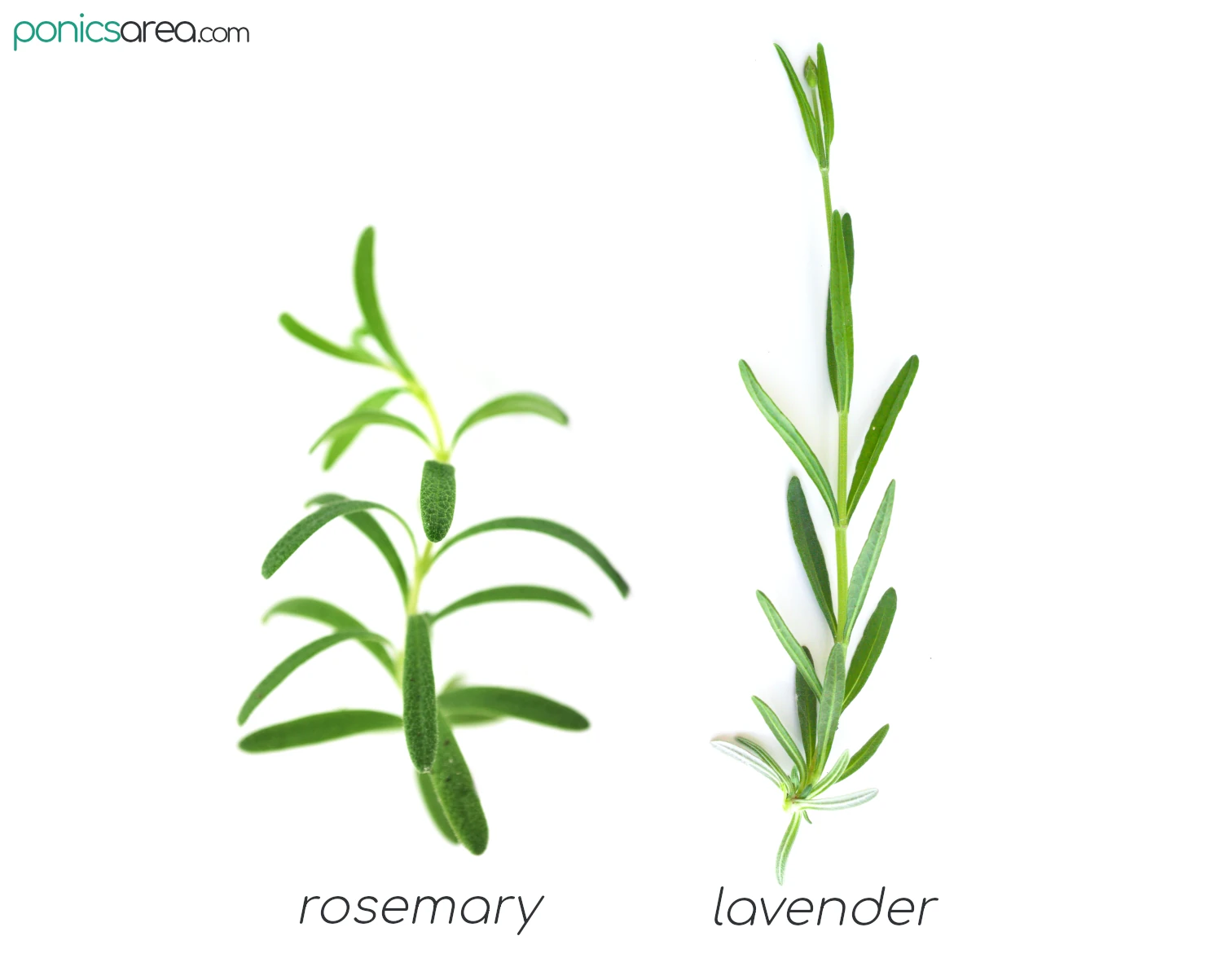
Rosemary vs lavender appearance and similarities
You might not have expected this from a rosemary vs lavender debate but there’s on common feature that I want to discuss first: these two herbs can look incredibly similar if one of them doesn’t have flowers.
If a lavender plant isn’t in bloom, how can you tell rosemary from lavender?
When it’s blooming, lavender is unmistakable. The purple flowers and the fragrance cannot be confused with anything else.
But if it’s not flowering, I must admit that lavender can look a lot like rosemary. Their similar appearances are amazing. It’s something like identifying parsley and cilantro only by the way they look, not by smell or taste.
If there’s one thing to remember is that rosemary can look absolutely beautiful in a pot with its small, dense, narrow, pointed leaves. We tend to overlook how beautiful this herb can be even if doesn’t bloom beautifully like lavender does.
Rosemary flowers vary from pale to rich blue, violet, pink or white.
How you can tell rosemary from lavender
- rosemary and lavender leaves can have a very similar shape but rosemary leaves are a more darker green on top
- they have a slightly different scent – that’s one way to tell them apart
- rosemary has a unique scent even if it’s compared to how lavender smells – a hint of camphor with notes of pine and nutmeg
- lavender is more floral, more fragrant, with lemon, mint and camphor overtones – this is what it’s famous for and why it’s so used for its lavender fragrance by so many industries, especially in the perfumery industry
- another sure way to differentiate the two when they look so similar is by taste
- rosemary has an unmistakable taste, it’s what makes it so useful in any kitchen – a strong piney taste, more pungent than lavender, a bit bitter if eaten raw
- lavender has a floral flavor with a few notes of wood and fruit – very similar to how it smells
3. Rosemary and Lavender Oils Benefits
Another common feature in our rosemary vs lavender comparison is that their oils can benefit the skin.
To be honest, the benefits are surprising but that’s only because I naturally associate herbs with cooking, since I love being in the kitchen as much as I love growing herbs for consumption.
Between the two, lavender oil is more useful.
Lavender actually gets it name from the Latin word lavare (to wash), being used by the Romans to scent their public baths.
Lavender oil benefits
- wide array of benefits for households
- antibacterial and antiseptic – a good choice for blemished skin
- gently moisturizes skin
- insect repelling
Rosemary oil benefits
- disinfectant and antibiotic properties – according to theepicentre.com, in World War II, rosemary leaves and juniper berries were burned in hospitals to kill germs
- helps lighten dark spots and blemishes on the skin
4. Propagate them from cuttings
Propagation from cuttings is a procedure that applies to all herbs, not only the two subjects of our rosemary vs lavender debate.
However, sowing seeds still remains the preferred method for growing lavender.
For rosemary, growing from cuttings is advisable because the seeds germinate and grow slowly. To give you a reference for exactly how slow we’re talking about, know that you should sow rosemary seeds three to six months prior to the growing season.
Both herbs do well in sandy soils, well-drained soil. A low-to-medium nutrient soil mix works well for both. They definitely don’t require nutrient-rich soils.
If we were to judge it by its native region, rosemary actually likes a dry, alkaline, rocky soil.
They’re both drought-tolerant, don’t require much watering.
5. Both herbs are not invasive
Lavender should be famous for the fact that it’s not invasive at all, unlike mint, thyme, and oregano, which should be famous for the fact that they can take over a garden. Read my post on does lavender spread to understand why it doesn’t spread out at all.
Rosemary is a non-invasive plant, as well. It usually ends up growing 4-6 feet in height and spreading 6-8 feet.
You must remember that you need to prune both of them regularly to maintain a beautiful shape of their shrubs.
6. Are both herbs perennials?
These two herbs are perennials.
Lavender continues to grow throughout a period of 5 years, until it reaches 2-3 feet in height and width. It will also please you to know that lavender is generally free of pests and diseases.
Rosemary can be grown both as an annual and as a perennial. As an annual it completes its life cycle in 1 year, as a perennial it completes its life cycle in 3 or more years.
Overwatering can cause browning of the leaf tips, root rot. Pests like spider mites, whiteflies, and mealybugs can affect rosemary.
I might have missed a few details in my rosemary vs lavender comparison but I’m confident that I’ve covered all the major differences and common features.

